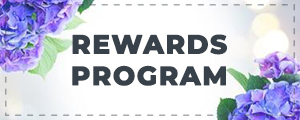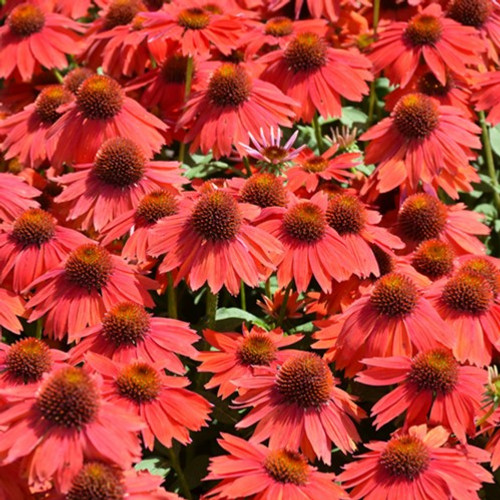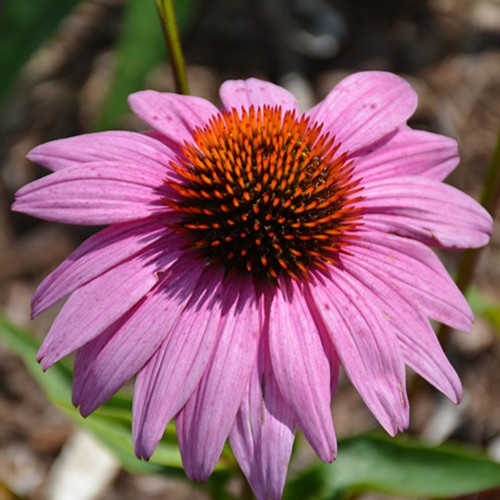| Echinacea pallida |
USDA Zone: 3-10 |
Pale Purple Coneflower has masses of beautiful lightly-scented purple daisy flowers with shell pink overtones and coppery-bronze eyes at the ends of the stems from early summer to mid fall, which are most effective when planted in groupings. The flowers are excellent for cutting. Its narrow leaves remain green in colour throughout the season.
A native coneflower for dry gardens that blooms earlier than most, in June and July, extending the summer season of these pollinator-friendly plants. Water until fully established when its tap root ensures drought tolerance.
This variety features long, narrow, drooping purple-pink petals that fade to white, with coppery-orange center cones; stems and seed heads will remain erect and feed the birds in winter; use in naturalized areas.
Pale Purple Coneflower is recommended for the following landscape applications;
- Mass Planting
- General Garden Use
- Container Planting
Native to Ontario
Common Name: Pale Purple Coneflower
|
Key Feature
|
Light Needs | Landscape Uses |
 |
 |
|
|
|
|
| More About Pale Purple Coneflower |
| Height: 24-36 inches |
Spread: 12-24 inches |
Flower Colour: Pink Shades |
|
Easily grown in average, dry to medium, well-drained soil in full sun to part shade. Best in full sun. An adaptable plant that is tolerant of drought, heat, humidity and poor soils. Plants usually rebloom without deadheading, however prompt removal of spent flowers improves general appearance. Freely self-seeds if at least some of the seed heads are left in place. Pale Purple Coneflower is a fine choice for the garden, but it is also a good selection for planting in outdoor pots and containers. With its upright habit of growth, it is best suited for use as a 'thriller' in the 'spiller-thriller-filler' container combination; plant it near the center of the pot, surrounded by smaller plants and those that spill over the edges. It is even sizeable enough that it can be grown alone in a suitable container. Note that when grown in a container, it may not perform exactly as indicated on the tag - this is to be expected. Also note that when growing plants in outdoor containers and baskets, they may require more frequent waterings than they would in the yard or garden. Be aware that in our climate, most plants cannot be expected to survive the winter if left in containers outdoors, and this plant is no exception. NOTE: Some flowers and plants may be harmful or poisonous to people or pets if touched or ingested. If you require more information before placing an order, please let us know in advance. |









